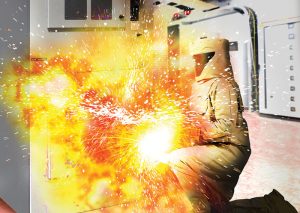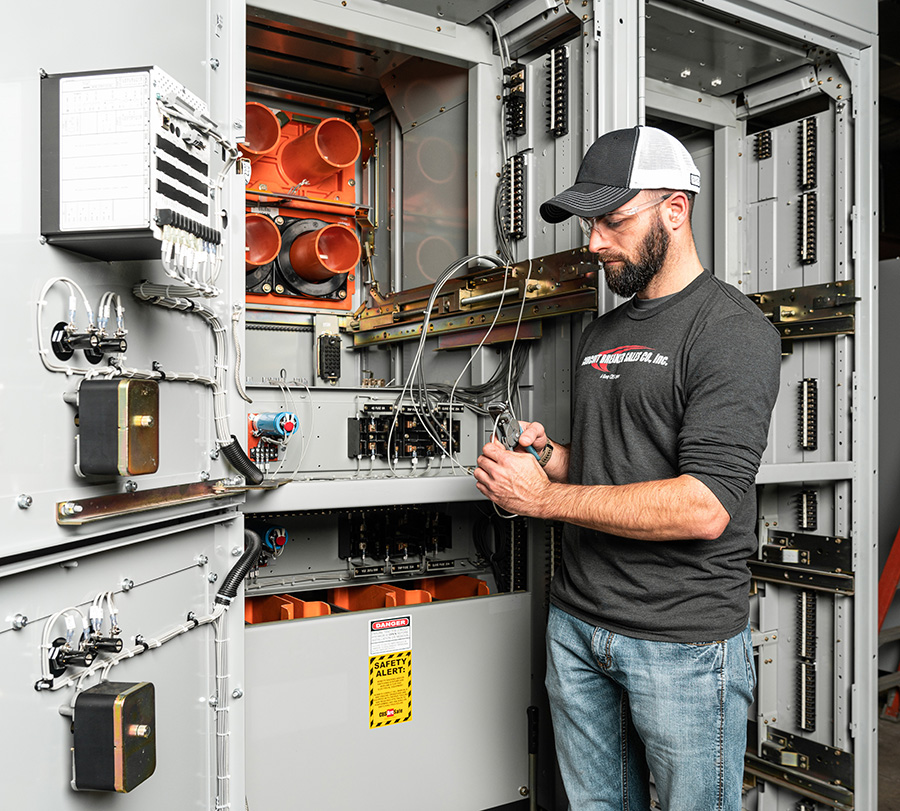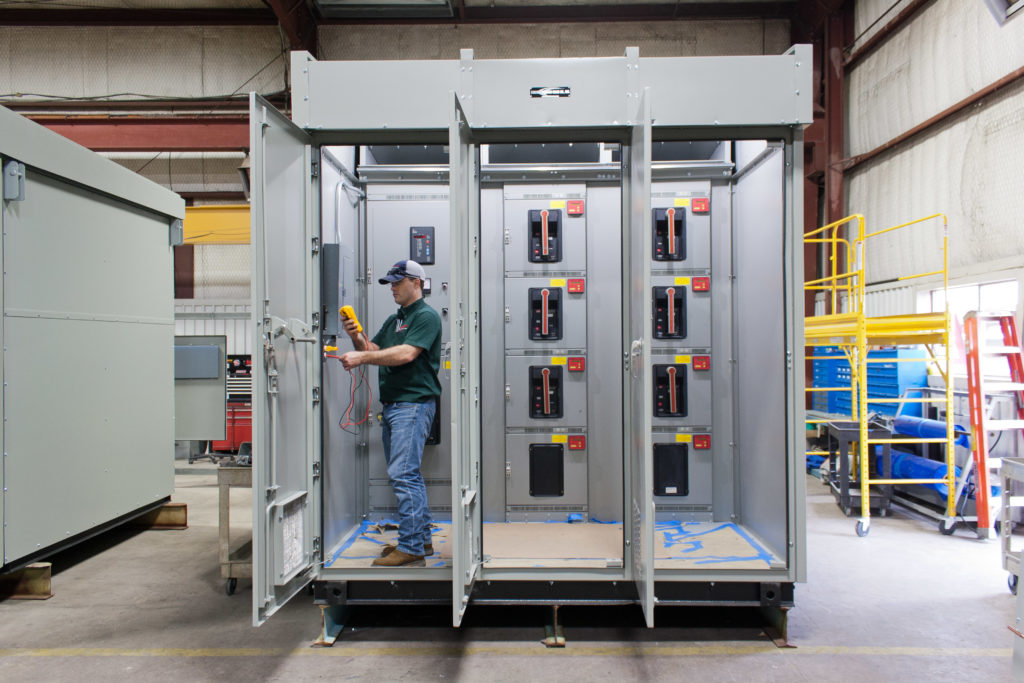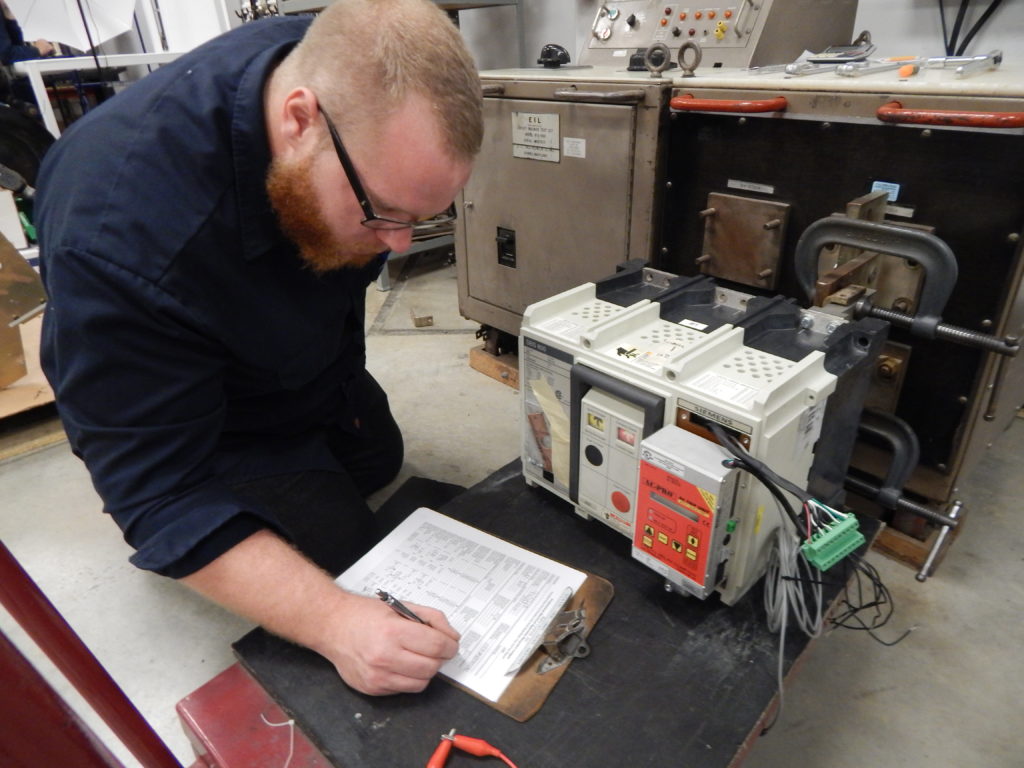Changes in how arc flash energy is calculated provide more nuanced and accurate results compared to studies done previously, but knowledge and best practices are still what keep people safe from electrical dangers.
By Denise Green, Circuit Breaker Sales, Detroit

While NFPA 70E 130.5(G) requires any existing study to be reviewed for changes every five years and updated accordingly, the standard does not require recalculation if no changes have been made. However, the study review must be documented and recorded. The 2018 IEEE 1584 calculation changes are significant to the extent that hazards might be higher, so for equipment owners, calculation is worth revisiting, even without system changes.
That said, a label by itself doesn’t keep people safe from electrical dangers. Knowledge and best practices do.
With that in mind, this article looks at how proper breaker shop services — including maintenance, testing, repair, retrofits, and retrofills — can reduce arc flash danger and associated PPE requirements. It is part of a series of articles from Group CBS electrical companies that look at the causes of arc flash and how remote racking solutions, testing, maintenance, and other shop and field services can reduce arc flash danger to personnel and equipment.
What Is Arc Flash?
In 1982 IEEE life fellow Ralph Lee wrote the seminal paper “The Other Electrical Hazard: Electric Arc Blast Burns.” In it, Lee tells us that arc flashes are caused by poor electrical contacts or insulation between an energized piece of metal and some other conductor. An arc flash can generate an electric arc with a temperature of 35,000°F, or approximately four times the temperature of the sun’s surface, as well as a significant arc blast. That is hot enough to kill any unprotected person standing within 5 feet and to send a person standing 10 feet away to the hospital with third-degree burns and/or impact injuries. In its paper “Arc-Flash, Blast Protection Isn’t Just a Fashion Statement,” Group CBS company CBS ArcSafe goes into greater detail about the causes and destructive power of arc flash incidents.
As the papers explain, the safest way for people to avoid arc flash injuries is to operate equipment from outside the arc flash boundary using remote racking and switching solutions. It’s important to note that remote racking and switching devices will not prevent an arc flash incident but will keep personnel out of the immediate blast zone. When considering equipment operation and hazards, it’s important to know common, easy ways to reduce the available incident energy released by an arc flash fault.

Maintenance and Testing: First Line of Defense
Circuit breakers help reduce arc flash dangers by sensing fault conditions and interrupting the flow of power. The better the sensing mechanism and the faster the breaker interrupts the electrical current, the less energy is available for an arc flash. If an upstream circuit breaker is supposed to clear its contactors and break the circuit within 0.5 seconds after sensing a downstream fault, but it takes one, three, or five seconds to stop the electrical flow, the arc flash hazards listed on the label are not accurate.
Circuit breaker timing tests are done both in the field and in the shop to determine if equipment is operating within OEM parameters. First trip timing involves evaluating how long it takes breaker contacts to open after being in a static position for an extended period of time. New options in the marketplace have made first trip time capture available, with data captured by a solid-state trip unit before service occurs. Testing after the first trip can show marked improvements in timing just because of exercising the breaker mechanism. First trip information can be powerful data to add to the overall equipment evaluation.
A new circuit breaker may be rated to open in milliseconds — and it will! But several years after installation, if the circuit breaker has never been tripped or exercised, atmospheric conditions may have contaminated the equipment and gravity has had plenty of time to pull lubricant off critical components. Furthermore, within three to five years, most petroleum-grade lubricants start to degrade. Breaker maintenance service and proper lubricants improve a breaker’s operation and reliability. The mere act of opening and closing a circuit breaker is a basic useful maintenance procedure to assist in the future correct operation of breakers.

How Many Breaker Operations Are Too Many?
While opening and closing a breaker is a good and valid maintenance exercise, too many operations will degrade a breaker’s ability to break an electrical flow. For example, if a breaker is being used as a motor starter and is turned on and off several times a day, its springs, contacts, and other internal components are going to become worn and less effective. As a general rule, if a breaker has been operated 5,000 or more times, it needs a thorough evaluation for wear. Medium-voltage circuit breakers usually have operations counters built in, making this evaluation easier. An experienced technician can look at both low-voltage and medium-voltage equipment and tell you if some level of service is recommended.
Incident Energy Considerations
Often, the largest available incident energy values from an arc flash are seen in 480 V low-voltage circuit breakers in distribution substations. Why? The inherent design of a standard substation, with a step-down transformer feeding a main breaker, provides a section of bus with no overcurrent protection. The isolation of the high- and low-voltage windings of the transformer transfers all the protection from the line side of the 480 main breaker to the fuses in the medium-voltage switch, resulting in some of the highest arc flash incident energy availabilities in a facility.
New components of arc flash calculations include enclosure sizes and bus bar orientations — information that most users will not have available but that an experienced service shop will have (so use us as an information resource). Experienced technicians can take this into account when examining existing arc flash labels during the safety planning stages of service.

Upgrade Your Relays, Trip Units, and Equipment
There are many considerations when evaluating fault energy hazards in a facility. Existing equipment may have older, slow-acting protective devices, such as slow-blow fuses on a motor starter, an electromechanical relay that doesn’t have an instantaneous setting, or series overcurrent devices that operate on thermal overheating during overloads. Retrofitting older breakers with more capable relays, solid-state trip units, or correctly chosen fuses can reduce the available arc flash energy and potential equipment damage should a fault happen.
One example of a retrofit is adding AC-Pro-II solid-state trip units to older breakers. In addition to offering multiple protection modes (long time, short time, instantaneous, and ground fault functions) to detect faults, the AC-Pro-II has a “sluggish breaker” feature that monitors the time needed to open the breaker and tracks that time over multiple operations. When the open time goes above a preset limit, the device issues an alarm for review and maintenance.
Correct fusing is another way to reduce the time necessary to interrupt electricity flowing in a fault condition. It’s important to consider, with an engineering study, how transformer and motor in-rush can lead to nuisance blown fuses. Fused devices also have the potential for single-phase situations. Each fuse protects only one phase in a multiphase system, allowing power to flow on in other legs if only one or two fuses blow. Trained and knowledgeable technicians can test for this and recognize the hazards associated with a single-phase situation.
Another common upgrade is the replacement of bolted pressure switches with modern circuit breakers that have solid-state protective devices. This is a retrofill solution that we regularly offer to customers to reduce potential fault energy and follow-on equipment damage. Bolted pressure switches are typically fused for overcurrent protection and have a ground fault relay. This is a limited amount of system protection by today’s standards. Additionally, bolted pressure switches that are not properly maintained are prone to stick or respond sluggishly when called upon to operate. By comparison, modern airframe and insulated case breakers are much more reliable and come with the protective features described above.
Conclusion
Experienced electrical service shops can help customers recognize and implement IEEE 1584’s new arc flash calculation considerations by providing hard-to-find dimension and bus orientation information while reducing the potential danger to people and equipment through maintenance, testing, component upgrades, and life extension retrofits and retrofills. Not sure how the new arc flash calculations will affect your operations? Give us a call at 800-232-5809 or contact us.
Read the whole series:
